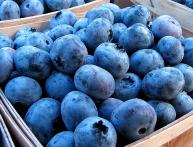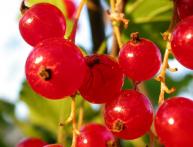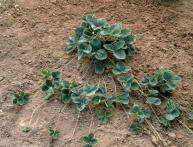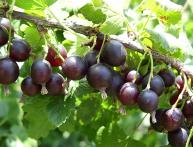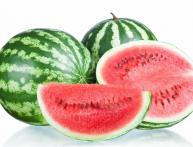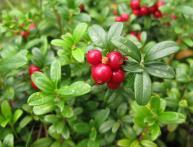Growing garden blueberries: choosing a location, planting, care and watering

Several subspecies of the berry, which is commonly called blueberry, are common in the wild; in addition, it is often confused with its closest relative, blueberry.
Let's try to figure out what refers to garden blueberries and how to grow them in a personal plot.
Content:
Description of blueberry
Several species grow in natural conditions blueberries. The most common and famous are the common blueberry and the highbush blueberry. The common blueberry is a deciduous low-growing shrub common in the northern hemisphere of the continent of Eurasia, as well as in North America, from California to Alaska. Prefers to grow in damp places. Has many Russian names:
- gonobobel
- water drinker
- blueberry
- fool
- gonoboy
Highbush blueberry or corymbose berry originally grew in North America and later gave rise to cultivated garden varieties of blueberries. In Russian, the berry also received several names:
- blueberry
- corymbose berry
- American blueberry
- Vaccinium scutum
- tree blueberry
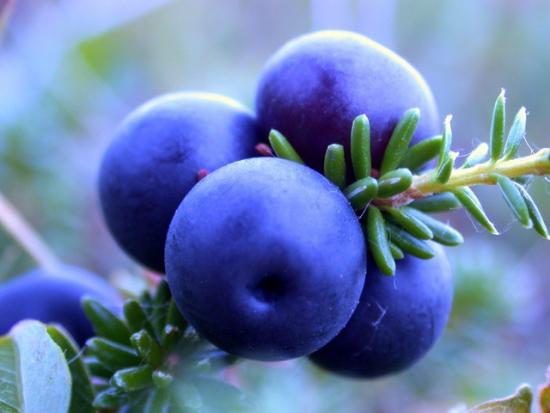
Currently, highbush blueberry is widely grown not only in industrial gardens in America, Australia and Europe, but is also gaining popularity in amateur gardening.The demand for garden blueberries is explained by the taste and technological properties of the berries. In the USA, more than 10,000 hectares are allocated for garden blueberries. The history of growing berries in American cultural gardening goes back more than 100 years.
Highbush blueberry is a deciduous shrub that reaches a height of 2 to 4 meters. Flowers appear at the end of May, they are collected in inflorescences of corymbs of 15-20 pieces. The berries are black, with a bluish tinge. The harvest begins in mid-July.
From one bush you can collect up to 4-5 kg of berries. A significant inconvenience is the delay in achieving ripeness, so picking berries from one bush can take three weeks.
The garden blueberry assortment is annually replenished with new varieties and hybrids. They can be divided into high blueberries and semi-high blueberries. For amateur gardening, varieties and hybrids of semi-tall varieties of this crop are preferable. For regions with harsh winters, it is optimal to grow semi-high varieties that can withstand frosts down to -40 degrees:
- North
- Norcountry
- Northblue
We can also recommend growing varieties of blueberries with different ripening periods. Early ripening and varieties:
- Weymouth
- Erliblue
- June
- Bleuetta
- Mid-season varieties:
- Bluecrop
- Blue Ray
- Berkeley
Late varieties:
- Dixie
- Coville
- Gerbet
- Jersey
- Elliot
To get a garden blueberry harvest, you need to follow several mandatory rules and conditions when planting it.
Planting blueberries
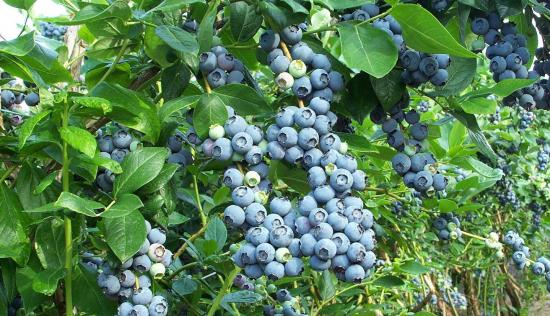
Selecting a location
Garden blueberry bushes should be placed on the site in a well-lit, sunny place; in exceptional cases, light partial shade is acceptable.The plant does not tolerate close groundwater, so those places where they are located less than a meter from the surface are not suitable for this crop. It has been noticed that berries in well-lit places have a sweeter taste than those grown in the shade.
The soil
The best soil for blueberries there will be loose peaty or sandy soils with an acidic and slightly acidic reaction. Clay soil with good drainage is also suitable. Before planting, complex mineral fertilizer is applied to the soil and well seasoned with organic mixtures of predominantly plant origin. The area is being dug up. When planting in spring, it is better to do this in the fall.
Planting material
For planting in the garden, you can purchase ready-made seedlings from trusted manufacturers. Since blueberry roots are sensitive to drying out, you should not take a bush with an open root system. If there are already one or two varietal bushes on the site, then you can get additional plants for planting as follows:
- dividing the bush
- layering
- rooted cuttings
Landing
Garden blueberries are best planted in the spring, after the ground has completely thawed. The distance between bushes is from 1.5 m to 2 meters. Row spacing is at least 1 meter wide. Semi-tall varieties can be planted a little thicker. The size of the planting hole is approximately 50 cm by 50 cm. Its bottom is filled with:
- leaf soil
- compost
- sawdust
- bark mulch
Place the seedling in the hole, straighten the roots and cover them with soil. Water the bush well, mulch the tree trunk with peat, bark, and sawdust. It is important to plant the blueberry bush so that after watering and settling of the soil, the root collar is 5-10 cm deep into the ground. In general, blueberry bushes are quite unpretentious and durable, but they require some care.
Caring for garden blueberry bushes
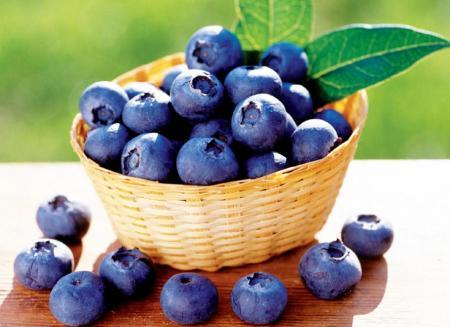
Watering
Garden blueberries are very responsive to good abundant watering. In the first year after planting, the bushes must be watered quite often, not allowing even the slightest drying of the soil before the seedlings take root. In dry weather, during the first weeks, it is better to water blueberries every other day with additional spraying with cool water. In wetter weather, one watering every three days is sufficient.
For adult bushes, watering is very important in the second half of summer during the formation of flower buds on which the future harvest depends. No matter how favorably the plant reacts to abundant watering, stagnation of water is contraindicated for it. It is advisable to loosen the soil before watering, and mulch after watering.
Top dressing
If before planting the area where blueberries were planted was fertilized and dug up, then in the first summer seedling does not need fertilizing. The next year, the young bush is fertilized with a complex mineral mixture in the amount of 20 grams. You will also need 5 kg of organic fertilizer, preferably vegetable compost or peat.
For a bush 3-4 years old, the amount of mineral fertilizer increases to 100 grams, and the organic mixture will require at least 10-15 kg per bush. For an adult fruit-bearing bush, at the beginning of summer you will need a mixture of potassium and phosphorus fertilizer. Take 90-100 grams of the first, 120 grams of the second. At the end of summer it is better to add 80 grams of ammonium nitrate.
Organics need up to 15 kg for each plant. To reduce the alkaline reaction of the soil per square meter. meter add 10 grams of ground sulfur.Only a well-formed blueberry bush will bear fruit abundantly.
Formative pruning
There is no need to prune the blueberry bush in the first year after planting. The following year, all broken and damaged parts of the bush and branches with signs of rot and illnesses. Pruning is purely sanitary. In the next two to three years, shoots are pruned, which thicken the bush and do not give good annual growth.
From 6 to 8 strong fruiting shoots are left on the plant. Pruning is carried out in early spring, before the sap begins to flow, or in late autumn, before the onset of winter. With proper care, blueberries can bear fruit in one place for more than 30 years.
Video on how to properly plant blueberries:
Interesting information about the vegetable garden




